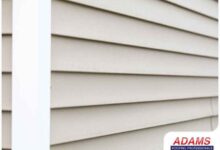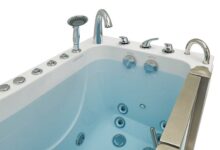What is an Energy Efficient Window? A Comprehensive Guide
What is an Energy Efficient Window? This comprehensive guide delves into the world of energy-saving windows, exploring their design, impact on energy consumption, and environmental benefits. From understanding the fundamental principles of energy efficiency to exploring various window types and installation techniques, we’ll equip you with the knowledge to make informed decisions about your windows.
Energy efficiency in windows isn’t just about saving money on your energy bills; it’s about creating more sustainable homes and contributing to a healthier planet. By examining the key components of energy-efficient windows, including glazing materials, frames, and seals, we’ll uncover the science behind these crucial building elements. The guide also highlights the interplay between climate, window orientation, and window size to optimize energy savings.
Defining Energy Efficiency in Windows: What Is An Energy Efficient Window
Windows play a crucial role in a building’s energy balance. Their effectiveness in regulating temperature and minimizing heat loss or gain directly impacts energy consumption. Understanding how windows impact energy efficiency is essential for designing and maintaining energy-conscious buildings.Energy efficiency in windows refers to their ability to minimize heat transfer between the interior and exterior environments. This is achieved through a combination of factors, including the materials used in the window’s construction and the design of its layers.
A window’s energy efficiency rating directly correlates to the building’s overall energy consumption.
Factors Affecting Energy Efficiency
Window energy efficiency is influenced by several critical factors. These include the type of glass used, the frame material, the presence of any insulating layers, and the window’s overall design. Proper consideration of these factors is crucial for optimizing a building’s thermal performance.
Types of Window Glass
Different types of glass offer varying levels of insulation. Single-pane windows are the least energy-efficient, allowing significant heat transfer. Double-pane windows, with an air gap between the panes, improve insulation. Triple-pane windows, with two air gaps, provide superior insulation and are more energy-efficient than their double-pane counterparts. Low-Emissivity (Low-E) coatings on glass further reduce heat transfer by reflecting infrared radiation.
Window Frame Materials
The frame material of a window also contributes to its energy efficiency. Wood frames, while aesthetically pleasing, can have variable insulation properties. Vinyl and aluminum frames are more consistent in their insulation performance. Modern advancements in window frame materials aim for better thermal insulation, reducing heat loss or gain.
Window Metrics
Quantifying energy efficiency in windows is essential for comparison and selection. Key metrics include U-value and Solar Heat Gain Coefficient (SHGC). U-value represents the rate of heat transfer through the window, with lower values indicating better insulation. SHGC measures the amount of solar heat admitted through the window, which can either be beneficial or detrimental depending on the climate.
Higher SHGC values are desirable in climates with limited sunlight.
Comparison of Window Types
| Window Type | U-Value (W/m²K) | SHGC | Energy Efficiency Rating |
|---|---|---|---|
| Single-pane | 6.0 – 7.0 | 0.85 – 0.90 | Low |
| Double-pane | 2.5 – 4.0 | 0.60 – 0.75 | Medium |
| Triple-pane | 1.5 – 2.5 | 0.50 – 0.65 | High |
| Double-pane with Low-E | 2.0 – 3.5 | 0.35 – 0.50 | High |
The table above provides a general comparison. Specific U-values and SHGCs will vary depending on the specific window construction and materials used. Consult manufacturers’ specifications for precise details.
Key Components of Energy Efficient Windows
Energy-efficient windows are crucial for reducing heating and cooling costs, improving indoor comfort, and minimizing the environmental impact of buildings. These windows achieve their efficiency through careful consideration of various components, working together to regulate the transfer of heat and light. Understanding these components is key to making informed choices for a more sustainable and cost-effective home or building.Modern windows are designed to minimize heat transfer and maximize natural light penetration.
This requires a sophisticated interplay of different materials and their specific properties. This section will delve into the essential components and their respective roles in achieving energy efficiency.
Glazing Materials
Glazing materials play a pivotal role in a window’s energy performance. Different types of glass, coatings, and layers significantly impact how much heat is transmitted through the window. Selecting the appropriate glazing material is essential for achieving optimal energy efficiency.
- Low-Emissivity (Low-E) Coatings: These coatings, applied to the glass, reflect infrared radiation, reducing heat transfer. They are highly effective in both hot and cold climates, minimizing energy loss and gain, respectively. Low-E coatings are a key factor in modern energy-efficient windows.
- Insulating Glass Units (IGUs): IGUs are composed of two or more panes of glass separated by an air space. This air gap acts as insulation, significantly reducing heat transfer. The thickness of the air space and the type of gas filling the space (e.g., argon) further influence the insulating properties. By hindering convection and conduction, IGUs provide substantial energy savings.
- Laminated Glass: Laminated glass, with a thin interlayer of polyvinyl butyral (PVB), increases the window’s strength and safety. This material also enhances sound insulation and provides an extra layer of thermal resistance, improving energy efficiency.
Window Frames
Window frames are another critical component affecting energy efficiency. They must provide a strong and airtight seal around the window perimeter to prevent air infiltration.
- Material Selection: Frames made from materials with good thermal properties, like insulated or composite materials, can significantly reduce heat transfer. Wood, vinyl, aluminum, and fiberglass are common choices, each with its own thermal conductivity characteristics.
- Airtight Construction: Proper sealing around the frame, including gaskets and weatherstripping, prevents drafts and air leakage. This is crucial for minimizing energy loss through air infiltration.
Seals and Weatherstripping
Seals and weatherstripping play a crucial role in maintaining a tight seal around the window perimeter, preventing air leakage and drafts.
- Types of Seals: Various types of seals, including gaskets, and weatherstripping, are used to create an airtight seal around the window frame. These seals prevent air from entering or escaping, reducing energy loss. Different types of seals are suitable for different window frame materials and designs.
- Proper Installation: Correct installation of seals and weatherstripping is essential to ensure a tight seal. Gaps or poorly fitted seals will compromise the window’s energy efficiency.
Glazing Material Properties Table
| Glazing Material | Thermal Conductivity | Solar Heat Gain Coefficient | Impact on Energy Efficiency |
|---|---|---|---|
| Double-pane glass | Moderate | Moderate | Moderate energy efficiency |
| Insulating Glass Unit (with Argon gas) | Low | Moderate | High energy efficiency |
| Low-Emissivity coated glass | Moderate | Low | High energy efficiency |
| Laminated Glass | Moderate | Moderate | Moderate to High energy efficiency (depending on the specific laminate) |
Factors Affecting Window Energy Efficiency
Understanding how various factors influence window energy efficiency is crucial for optimizing building performance and minimizing energy consumption. Choosing the right windows can significantly impact a home’s comfort and sustainability. The design and placement of windows are pivotal in determining how well a structure maintains its desired temperature.Climate conditions, window orientation, size, and placement all contribute to the overall energy efficiency of a window system.
Notice Top 10 Most Luxurious Arab Honeymoon Hotels for recommendations and other broad suggestions.
Analyzing these factors allows for informed decisions about window selection, leading to reduced energy bills and a more sustainable building.
Climate Conditions and Window Efficiency
Climate plays a critical role in determining the effectiveness of a window’s energy performance. Regions with extreme temperatures, either hot or cold, require windows that can effectively regulate internal temperatures. For example, in cold climates, windows need to minimize heat loss, while in hot climates, they need to reduce heat gain. This necessitates careful consideration of insulation materials and glazing options tailored to specific climate conditions.
The specific heat capacity of materials plays a critical role in this process, as well as the U-value and solar heat gain coefficient (SHGC).
Window Orientation and Heat Transfer
Window orientation significantly impacts heat gain or loss. South-facing windows, for instance, receive ample solar radiation during the winter, contributing to increased heat gain. Conversely, south-facing windows can lead to excessive heat gain during the summer, requiring strategies to mitigate this. North-facing windows, on the other hand, generally experience minimal heat gain or loss throughout the year, offering a more consistent temperature regulation.
East and west-facing windows exhibit intermediate levels of solar heat gain, influenced by the position of the sun throughout the day.
Window Size and Placement Impact
The size and placement of windows influence the amount of solar radiation entering a building. Larger windows allow more light and heat to penetrate, potentially increasing both heat gain and heat loss. Strategically placing windows can minimize this effect, ensuring a balance between natural light and thermal regulation. Proper window placement considers the direction of prevailing winds, minimizing drafts and heat loss.
Consideration should also be given to the surrounding landscape and the potential for shading from trees or structures.
Common Design Considerations for Energy Efficient Windows
Several design factors influence the energy efficiency of windows. High-performance glazing, with low U-values and SHGCs, is paramount. Proper sealing and insulation around the window frame, reducing air infiltration, are essential for minimizing heat transfer. Using low-e coatings on the glass reduces the transmission of infrared radiation, improving thermal performance. The choice of frame materials, such as insulated vinyl or high-performance aluminum, also contributes to energy efficiency.
Relationship Between Window Orientation and Energy Loss/Gain
| Window Orientation | Winter Energy Gain/Loss | Summer Energy Gain/Loss |
|---|---|---|
| North | Minimal gain or loss | Minimal gain or loss |
| East | Moderate gain in winter | Moderate gain in summer |
| South | Significant gain in winter | Significant gain in summer |
| West | Moderate gain in winter | Significant gain in summer |
Types of Energy Efficient Windows
Energy-efficient windows are crucial for reducing energy consumption in buildings, contributing to a sustainable environment. Choosing the right type of window is critical for optimizing energy savings and comfort while considering the various factors affecting their efficiency. This section delves into the different types of energy-efficient windows, their benefits, drawbacks, and relevant technologies.
Different Types of Energy Efficient Windows
Various window designs and technologies aim to maximize energy efficiency. Understanding these different types can aid in selecting the optimal window for specific needs and budgets.
- Double-Pane Windows: These are the most common type, consisting of two panes of glass separated by an air or gas-filled space. This creates an insulating barrier, reducing heat transfer. The air or gas layer helps trap heat inside during winter and prevents excessive heat gain during summer. Improved energy efficiency is achieved by using a gas like argon or krypton in the space between the panes.
- Triple-Pane Windows: These windows offer even greater insulation than double-pane windows. The additional pane further reduces heat transfer, leading to lower energy bills and enhanced comfort. Triple-pane windows are particularly beneficial in extreme climates, where significant temperature fluctuations occur.
- Low-Emissivity (Low-E) Windows: These windows use a special coating on the glass to reflect infrared radiation. This coating minimizes heat loss in winter and reduces heat gain in summer, resulting in substantial energy savings. Low-E coatings can significantly improve a window’s thermal performance and are often combined with other technologies for optimal efficiency.
- Laminated Windows: These windows utilize a thin, transparent interlayer between two panes of glass. This interlayer helps prevent shattering and enhances safety while improving the window’s thermal performance. Laminated windows are an excellent choice for areas with high wind speeds or potential for impacts.
- Insulated Glass Units (IGUs): IGUs encompass a broad category of double- or triple-pane windows that utilize different gas types and coatings to maximize energy efficiency. The combination of multiple panes, gas filling, and coatings contribute to superior insulation and reduced heat transfer.
Benefits and Drawbacks of Different Window Types
Understanding the advantages and disadvantages of each type is crucial for informed decision-making.
- Double-Pane Windows: Relatively affordable and widely available, they offer good energy efficiency. However, their performance may not match the higher efficiency of triple-pane or Low-E windows.
- Triple-Pane Windows: Deliver superior energy efficiency, leading to lower energy bills and enhanced comfort, but come with a higher price tag compared to double-pane windows.
- Low-E Windows: Significant energy savings are achieved due to their ability to reflect infrared radiation. The initial cost might be slightly higher than traditional windows, but the long-term savings are substantial.
- Laminated Windows: Enhanced safety and security are key benefits, along with improved energy efficiency due to the interlayer. However, they might be slightly more expensive than other types of windows.
- Insulated Glass Units (IGUs): Offering various configurations, IGUs provide superior energy performance and safety, but the cost depends on the specific design and materials used.
Low-E Coating Comparison, What is an Energy Efficient Window
Low-E coatings play a significant role in a window’s energy efficiency.
- Different types of Low-E coatings include those that primarily reflect infrared radiation, those that also block ultraviolet radiation, and those that combine both features. Comparing the specific coatings and their impact on thermal performance is crucial.
Comparative Table of Window Types
This table summarizes the energy efficiency and costs of different window types.
| Window Type | Energy Efficiency (Estimated) | Cost (Estimated) | Suitable Applications |
|---|---|---|---|
| Double-Pane | Moderate | Low | Residential buildings, general use |
| Triple-Pane | High | Medium | Residential buildings, commercial spaces in extreme climates |
| Low-E Double-Pane | High | Medium | Residential buildings, aiming for higher efficiency |
| Laminated | Moderate to High | Medium to High | Areas with high wind speeds, demanding security |
Improving Existing Windows for Energy Efficiency
Improving the energy efficiency of your home’s windows doesn’t always necessitate replacing them. A variety of methods can be implemented to significantly reduce energy loss and costs, making retrofitting a viable and often cost-effective option. These methods often provide a substantial return on investment, making them attractive for homeowners and property managers.
Methods for Improving Existing Windows
Improving the energy efficiency of existing windows can be achieved through several strategies, ranging from simple, low-cost measures to more involved upgrades. These techniques target different aspects of energy loss through windows, such as air leakage, thermal bridging, and solar gain.
Adding Insulation to Existing Windows
Adding insulation to existing windows can significantly reduce heat transfer, thus improving energy efficiency. This involves increasing the insulation value of the window frame and the space between the window panes. This process often involves the use of specialized foam or sealant materials. Proper installation is crucial to maximize the insulation’s effectiveness.
Installation of Window Films
Window films can be a highly effective and relatively inexpensive way to improve window energy efficiency. These films are thin, transparent coatings applied to the interior or exterior of a window. They can reduce solar heat gain in the summer and help retain heat in the winter. Different types of window films have varying degrees of effectiveness.
Proper selection and installation are critical to achieving optimal results.
Window Replacement Versus Retrofitting
Deciding between replacing existing windows and retrofitting them involves considering several factors, including cost, time commitment, and desired level of improvement. Window replacement offers a complete overhaul, potentially providing a more significant energy efficiency boost. Retrofitting, however, allows for targeted improvements to existing windows, making it often more affordable. A comprehensive cost-benefit analysis is essential for making an informed decision.
Calculating Energy Savings Potential of Retrofitting Windows
Calculating the energy savings potential of retrofitting windows involves assessing the specific window characteristics, the retrofitting method, and local energy costs. Tools and calculators are available online and from energy efficiency providers to estimate the savings. For example, by installing double-pane windows, homeowners can save between 10% and 30% on their energy bills. This estimate varies based on the specific location, climate, and window type.
Energy Efficiency and Window Costs
Investing in energy-efficient windows can seem expensive upfront, but the long-term savings often outweigh the initial investment. Understanding the factors influencing window cost and comparing different options is crucial for making an informed decision. A well-chosen energy-efficient window can significantly reduce energy bills and improve your home’s comfort level.
Relationship Between Window Cost and Energy Efficiency
Energy-efficient windows, incorporating advanced materials and technologies, typically command a higher price than standard windows. This premium reflects the added cost of features like low-emissivity coatings, multiple panes, and specialized frames. However, the increased upfront cost is often offset by substantial long-term savings on energy bills.
Factors Contributing to Energy Efficient Window Costs
Several factors contribute to the higher cost of energy-efficient windows. Advanced materials, such as low-emissivity (low-e) coatings, require specialized manufacturing processes. Multiple panes, which enhance insulation, add to the complexity and cost. High-performance frames, often constructed from durable and insulating materials like vinyl or composite materials, also increase the price. Furthermore, skilled labor and specialized installation techniques contribute to the overall cost.
Cost-Effective Ways to Achieve Energy Efficiency
While high-end energy-efficient windows offer the best performance, several cost-effective strategies can improve window energy efficiency without breaking the bank. Choosing windows with double or triple-glazed units can significantly reduce energy loss. Using proper window coverings, like thermal curtains or blinds, can further enhance energy efficiency and reduce heating and cooling costs. Properly sealing gaps around windows can also minimize energy loss.
Installing weather stripping and caulking can be surprisingly effective and cost-efficient ways to enhance window performance.
Long-Term Cost Savings Comparison
The long-term cost savings of energy-efficient windows often justify the higher upfront cost. Energy-efficient windows significantly reduce energy consumption for heating and cooling, resulting in lower utility bills over the window’s lifespan. These savings can translate into a substantial return on investment, particularly in regions with extreme climates or high energy costs. This reduction in energy consumption also contributes to a smaller carbon footprint.
Cost Comparison of Different Window Types
| Window Type | Energy Efficiency Rating (e.g., A+, A, B) | Estimated Initial Cost ($) | Estimated Annual Energy Savings ($) | Estimated ROI (Years) |
|---|---|---|---|---|
| Standard Single-Pane Windows | B | $150-$250 per window | $50-$100 per window | 10+ |
| Double-Pane Windows with Low-E Coating | A | $250-$400 per window | $100-$200 per window | 5-7 |
| Triple-Pane Windows with Argon Gas | A+ | $400-$600 per window | $150-$250 per window | 3-5 |
Note: Costs and savings are estimates and can vary based on location, window size, and specific window features. A professional energy audit can help determine the most cost-effective window solutions for a particular property.
Energy Efficient Window Installation
Proper installation is crucial for maximizing the energy-saving potential of energy-efficient windows. A poorly installed window, regardless of its high-performance features, can negate its efficiency gains and lead to costly repairs down the line. This process involves careful planning, precise execution, and adherence to specific techniques to ensure long-term performance.Careful planning and execution during installation are paramount for maintaining the energy efficiency of windows.
This encompasses everything from selecting the appropriate tools and materials to adhering to manufacturer guidelines and performing thorough sealing procedures. The results directly impact the overall energy savings achieved and the lifespan of the windows.
Installation Procedure
The process of installing energy-efficient windows generally follows a structured procedure. This includes meticulous preparation, accurate measurements, and precise installation to ensure a tight seal. The steps below provide a comprehensive guide.
- Preparation: Thoroughly inspect the window frame, ensuring it’s structurally sound and properly prepared for the new window. Remove any existing caulking or debris from the frame. Ensure the mounting surface is level and stable. Properly marking the window opening and checking for any potential obstructions or variations in the frame are critical steps.
- Measurements: Accurate measurements are critical for a perfect fit. Use precise tools to measure the window opening, accounting for any variations in the frame. This step ensures that the new window aligns correctly with the existing structure.
- Installation of the Window: Carefully position the new window in the prepared opening, ensuring it aligns with the pre-marked locations. Secure the window in place using the appropriate hardware and fasteners. Follow the manufacturer’s instructions for proper installation techniques.
- Sealing: Apply a high-quality, weather-resistant sealant to all gaps and seams around the window frame. This creates an airtight seal to prevent drafts and air leaks. Ensure the sealant is properly applied to prevent gaps or cracks, which could compromise energy efficiency. A professional installer will use specialized techniques for optimal sealing.
- Finishing Touches: Clean up the installation area. Check the window’s operation and function. Ensure the window functions smoothly and meets all safety requirements. A final inspection will identify any potential issues and allow for immediate corrective actions.
Necessary Tools and Materials
The successful installation of energy-efficient windows relies on using appropriate tools and materials. The correct tools and high-quality materials contribute significantly to the durability and energy efficiency of the installation.
- Measuring Tools: Tape measures, level, and marking tools are essential for accurate measurements and precise placement of the window.
- Installation Tools: Screwdrivers, drills, pry bars, and other tools specific to window installation are required for the assembly and mounting process. The right tools facilitate a professional and efficient installation.
- Sealant: High-quality, weather-resistant sealant is vital for creating an airtight seal around the window frame, preventing drafts, and maintaining energy efficiency.
- Fasteners: Appropriate screws, anchors, and other fasteners are essential for securing the window frame to the structure. The use of correct fasteners guarantees structural integrity.
- Safety Equipment: Safety glasses, gloves, and other personal protective equipment are crucial for the safety of the installer and others involved in the process.
Importance of Proper Installation Techniques
Proper installation techniques are crucial for maintaining the energy efficiency of the windows. Correct installation procedures directly affect the longevity and performance of energy-efficient windows.
Proper installation techniques involve a combination of precision and adherence to manufacturer guidelines. The right installation minimizes the potential for future issues and maintains the integrity of the window’s energy-saving features.
Impact of Professional Installation
Professional installers possess the expertise and experience to handle energy-efficient windows effectively. They have the knowledge to ensure that the installation adheres to best practices, maximizing the window’s energy-efficiency potential and longevity. Professional installation significantly contributes to the long-term performance and durability of the windows.
Professional installation ensures optimal sealing and alignment, leading to better energy efficiency and a longer lifespan for the windows.
Importance of Proper Sealing
Proper sealing is paramount for maintaining energy efficiency. A well-sealed window significantly reduces air leakage, minimizing energy loss through drafts and improving overall energy efficiency. A tight seal around the window frame is vital for achieving the expected energy savings.
Environmental Impact of Energy Efficient Windows

Energy-efficient windows play a crucial role in reducing the environmental footprint of buildings. Their ability to minimize energy consumption directly translates to lower carbon emissions and a smaller overall impact on the planet. This impact extends beyond the immediate building; it contributes to a broader sustainable future.Energy-efficient windows contribute significantly to a sustainable building approach by reducing reliance on fossil fuels for heating and cooling.
By optimizing thermal performance, they lower the demand for energy, leading to lower greenhouse gas emissions. This approach also minimizes the environmental strain from manufacturing and transportation.
Environmental Benefits of Energy Efficient Windows
Reduced energy consumption translates to a significant decrease in greenhouse gas emissions. This impact is particularly pronounced in regions with high energy demands for heating and cooling. Buildings using energy-efficient windows can substantially lower their carbon footprint, making them a valuable component of a sustainable building design.
Greenhouse Gas Emission Reduction
The reduction in energy consumption achieved by energy-efficient windows directly translates into lower greenhouse gas emissions. By minimizing the need for energy-intensive heating and cooling systems, these windows contribute to a decrease in carbon dioxide, methane, and other harmful emissions. This is particularly significant in regions with high energy consumption.
Energy Efficient Windows and Sustainable Buildings
Energy-efficient windows are a cornerstone of sustainable building practices. They contribute to reduced energy use, minimized waste, and improved indoor air quality, all of which are vital aspects of environmentally conscious building design. Examples include homes and commercial spaces that utilize passive solar design principles, taking advantage of natural light and minimizing the reliance on artificial lighting.
Resource Consumption During Manufacturing
The manufacturing process of energy-efficient windows involves the use of various materials, including glass, frames, and seals. The selection of materials and the manufacturing process can significantly affect the environmental impact. Minimizing material waste, using recycled materials, and implementing energy-efficient manufacturing processes are crucial steps in reducing the environmental footprint of window production. Careful consideration must be given to the life cycle assessment of the materials used.
Environmental Impact of Different Window Types
| Window Type | Material Composition | Energy Efficiency Rating | Environmental Impact (Estimated) |
|---|---|---|---|
| Double-pane windows with argon gas | Low-E coated glass, Argon gas | High | Medium |
| Triple-pane windows | Low-E coated glass, Argon gas | Very High | High |
| Laminated windows | Laminated glass, various frames | High | Medium-High |
| Insulated windows with wood frames | Insulating glass, wood | High | Medium |
The table above provides a simplified overview of the environmental impact. A more comprehensive assessment would require a life cycle analysis (LCA) considering specific manufacturing processes, material sourcing, and end-of-life management. Factors such as transportation, manufacturing processes, and disposal methods contribute significantly to the overall environmental impact of a window. Furthermore, the specific material choices and manufacturing techniques used in each type of window can drastically influence the overall impact.
Ending Remarks
In conclusion, choosing energy-efficient windows is a smart investment for your home, offering both financial and environmental benefits. This guide has explored the various facets of energy-efficient windows, from their fundamental design principles to the environmental impact and installation processes. By considering the diverse types of windows available, their associated costs, and the factors influencing their energy performance, you can make well-informed decisions about upgrading or retrofitting your windows to improve your home’s energy efficiency.
Ultimately, embracing energy-efficient windows is a step towards a more sustainable and comfortable living space.









